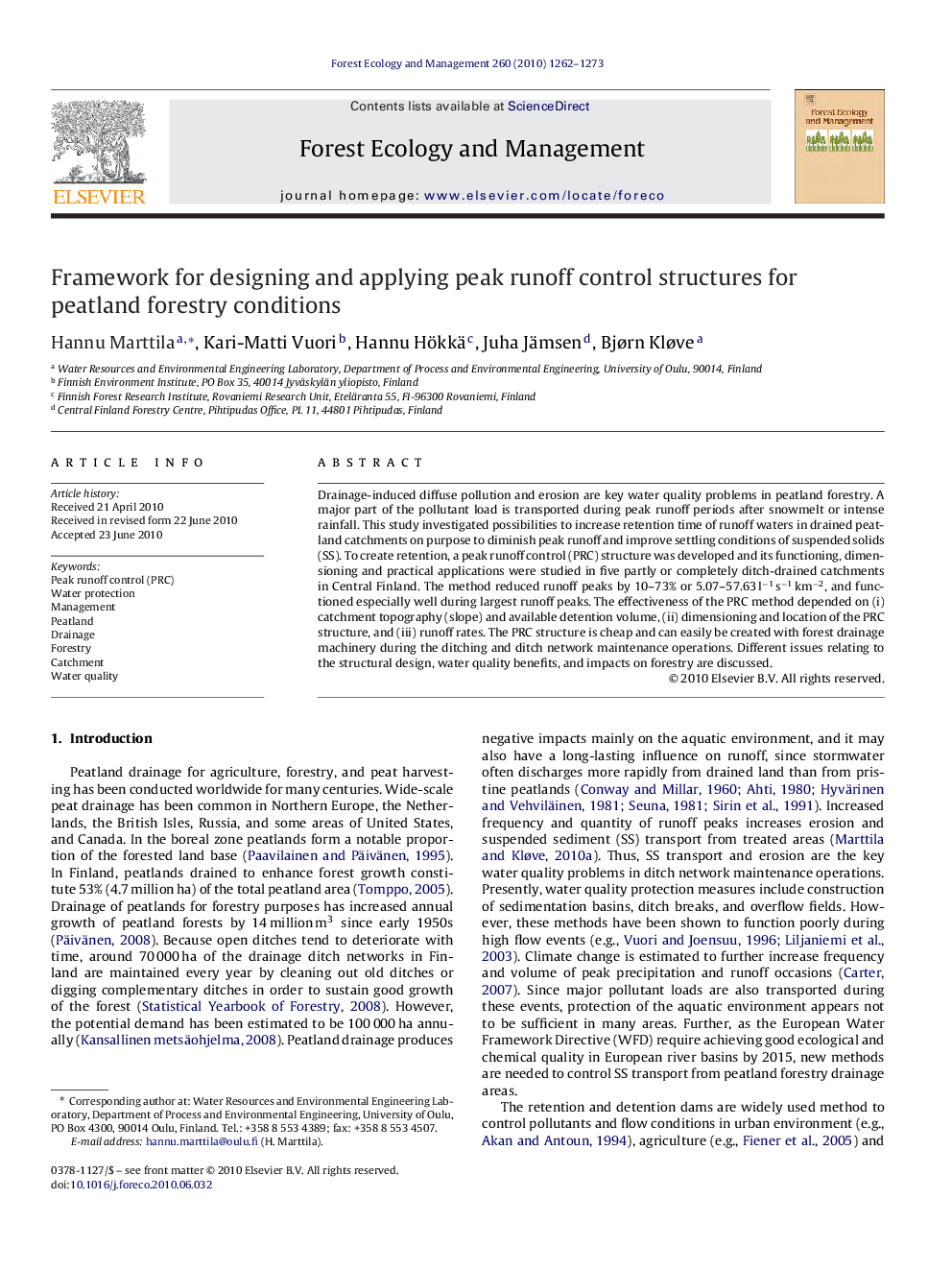| Article ID | Journal | Published Year | Pages | File Type |
|---|---|---|---|---|
| 88341 | Forest Ecology and Management | 2010 | 12 Pages |
Drainage-induced diffuse pollution and erosion are key water quality problems in peatland forestry. A major part of the pollutant load is transported during peak runoff periods after snowmelt or intense rainfall. This study investigated possibilities to increase retention time of runoff waters in drained peatland catchments on purpose to diminish peak runoff and improve settling conditions of suspended solids (SS). To create retention, a peak runoff control (PRC) structure was developed and its functioning, dimensioning and practical applications were studied in five partly or completely ditch-drained catchments in Central Finland. The method reduced runoff peaks by 10–73% or 5.07–57.63 l−1 s−1 km−2, and functioned especially well during largest runoff peaks. The effectiveness of the PRC method depended on (i) catchment topography (slope) and available detention volume, (ii) dimensioning and location of the PRC structure, and (iii) runoff rates. The PRC structure is cheap and can easily be created with forest drainage machinery during the ditching and ditch network maintenance operations. Different issues relating to the structural design, water quality benefits, and impacts on forestry are discussed.
Research highlights▶ Peak runoff control (PRC) method reduces runoff peaks from peatland forestry. ▶ The effectiveness of the PRC method depended on (i) catchment topography (slope) and available detention volume, (ii) dimensioning and location of the PRC structure, and (iii) runoff rates. ▶ The method can be used in various environments at peatland forestry conditions.
